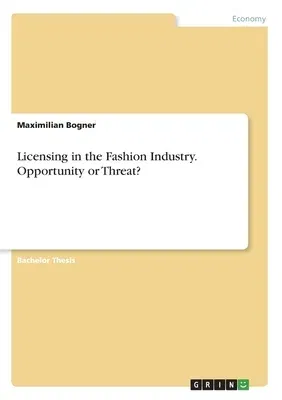Bachelor Thesis from the year 2017 in the subject Business economics -
Offline Marketing and Online Marketing, grade: 2.1, European Business
School - International University Schloß Reichartshausen
Oestrich-Winkel, language: English, abstract: A topic, which is regarded
as a crucial and effective tool for fashion brands, is licensing. The
licensing industry has turned out to be a very profitable and high-sales
generating business segment. The Licensing Industry Merchandiser's
Association (LIMA) states, that the total licensing industry's market
revenue accounted for more than 5,9 billion dollars in 2007. These
figures, however, only include the revenue, which has been created only
from licensing fees and royalties, paid as compensation to brand owners.
The present sales figures for licensed products in the fashion and
apparel industry underline the presence and effectiveness of this
marketing tool. The entire fashion and apparel industry's sales volume
for licensed products is more than 80 billion dollars. The totals sales
volume of licensed products in German-speaking countries, including
Germany, Austria and Switzerland, was approximately 22,4 billion Euro in
2005. This shows that more than a quarter of annual sales in the
European fashion industry are generated in those countries. Due to the
fact, that most of the sales were generated with products arising from
brand licensing agreements, brand owners see the biggest potential for
growth in brand licensing agreements. Additionally, growth expectations
arise from the increasing number of contracts and market volume. The
number of brand licensing contracts, which were signed in Germany, grew
from 750 contracts with a market share of more than 6 billion Euro, to a
current number of over 1.000 brand licensing agreements with a total
market volume of over 8.5 billion Euro in licensing fees. The objective
of this thesis is to analyze how brands develop and act in the fashion
industry. In this context it is crucial t


